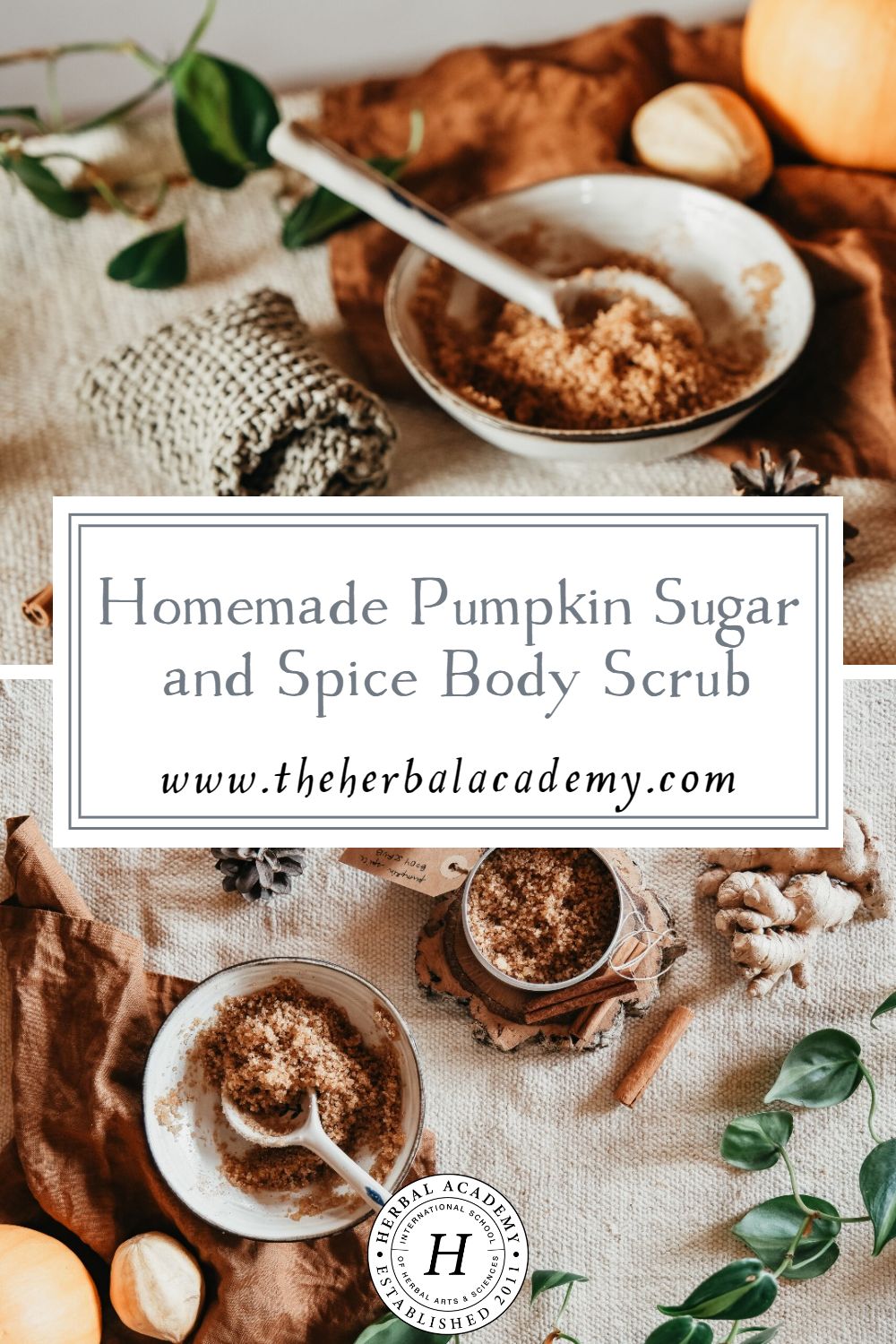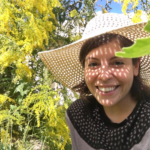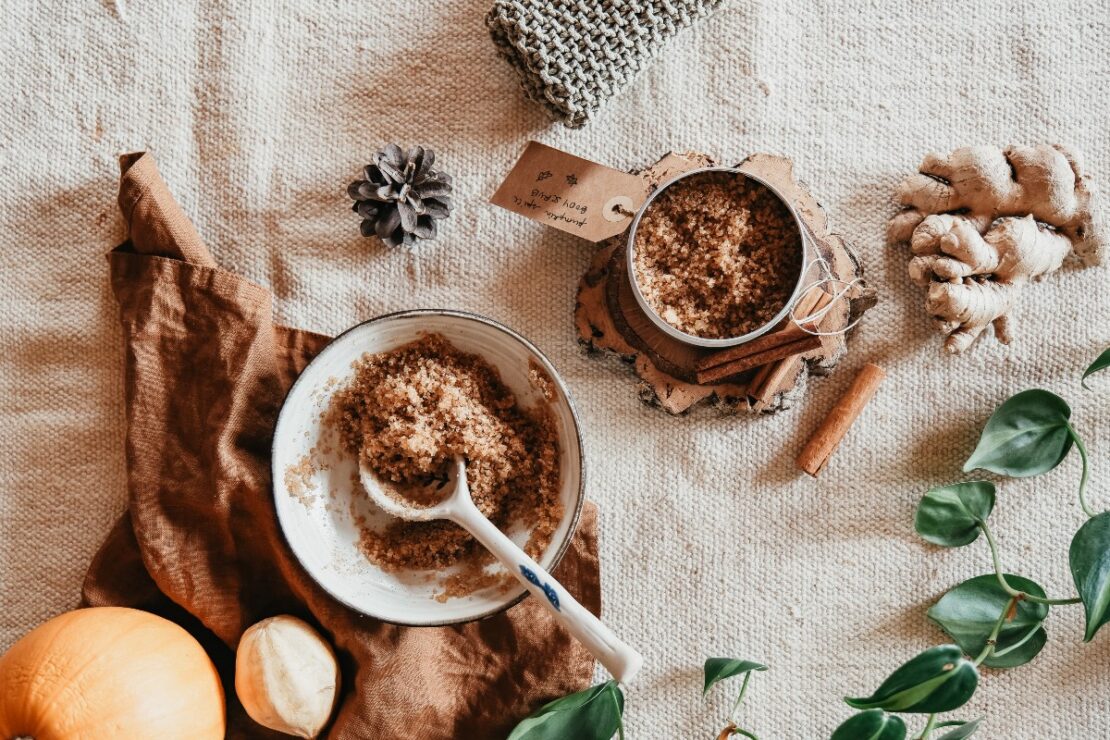
Homemade Pumpkin Sugar and Spice Body Scrub
It’s August in Ohio as I write this and while the weather is still decidedly summery, I can’t help but look forward to the autumnal change that is right around the corner. The burst of colors from the trees, warm fuzzy sweaters, and pumpkin everything is already on my mind. While I delight at every small change that signals the transition from summer to fall and wait for my local coffee shop to release their pumpkin latte, I had to figure out a way to get my pumpkin fix. Cue this delicious, both literally and figuratively, pumpkin body scrub.
The pumpkin in this recipe comes in the form of oil expressed from pumpkin seeds. While this wasn’t available in my local grocery stores, I was able to find this organic, cold-pressed one online. Pumpkin seed oil contains tocopherols or vitamin E which has antioxidant properties and can help to protect the skin from free radical damage caused by sun exposure (Cassano, 2012). It also contains high levels of fatty acids, which can be used topically to reduce inflammation and signs of aging (Angelo, 2012).
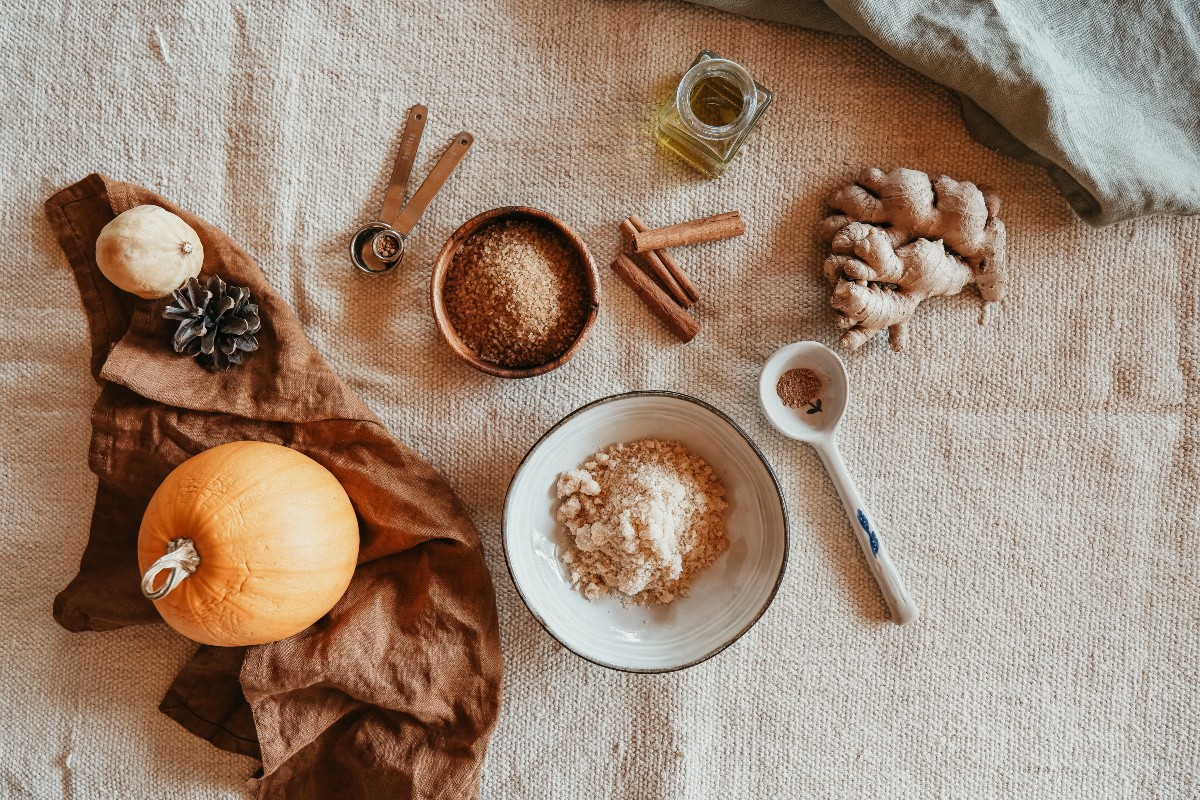
Sugar and Spice
I decided to use sugar for this scrub because sugars are humectant, meaning that they help to add moisture to the skin (Lautenschläger, 2014). Salt, on the other hand, can be a little more drying to the skin. I used a mixture of coarse turbinado sugar and fine brown sugar because I like the smooth and scrubby texture this creates. You can use brown sugar by itself if you don’t have turbinado or are looking for a gentler exfoliation, and the recipe will still work just fine.
Pumpkin and pumpkin spice blend may be two separate things, but since the spice combo was literally made to complement the naturally sweet and nutty profile of the pumpkin, in my mind and heart, they are one. Plus, all those spices are herbal allies compiled in a blend that allows us to access their benefits in an undeniably enjoyable way. This classic blend is comprised of cinnamon (Cinnamomum spp.), ginger (Zingiber officinale), nutmeg (Myristica fragrans), clove (Syzygium aromaticum), and allspice (Pimenta dioica).
All of these aromatic herbs contain volatile oils which contribute to the herbs’ actions in the body. The herbs in this blend are all considered stimulants, meaning they excite our bodily systems and encourage movement, improving various bodily functions. All of the pumpkin spices are carminative and antiseptic (Chevallier, 2000). No Joke, every last one of those herbal allies help to stimulate, soothe, and prevent the growth of disease causing microorganisms in our bodies. It’s literally perfect timing that the pumpkin spice latte comes out right at the beginning of cold and flu season.
Typically we see these benefits through ingesting these pumpkin spice herbs, but since these plants are also highly aromatic we can receive some bonus benefits (not to mention delight!) simply from enjoying their aroma. For example the scent of cinnamon has been found to increase alertness, decrease the time pressure, and decrease frustration in simulated driving scenarios (Raudenbush et al., 2009). Allspice has been shown to help combat headache, stress, and fatigue with its comforting scent (Zhang & Lokeshwar, 2012). While ginger helped ward off bouts of nausea in patients that were recovering from nephrectomy (kidney removal) surgery (Adib-Hajbaghery & Hosseini (2015).
Aromatherapy is a practice that can have a profound impact on our mental and emotional wellbeing through our sense of smell, particularly as it relates to the emotional centers in the brain. Even though we are not ingesting the pumpkin body scrub we can still enjoy the stimulating and comforting impact of these herbs through the warm, delicious fragrance and exfoliating texture of our plant allies.
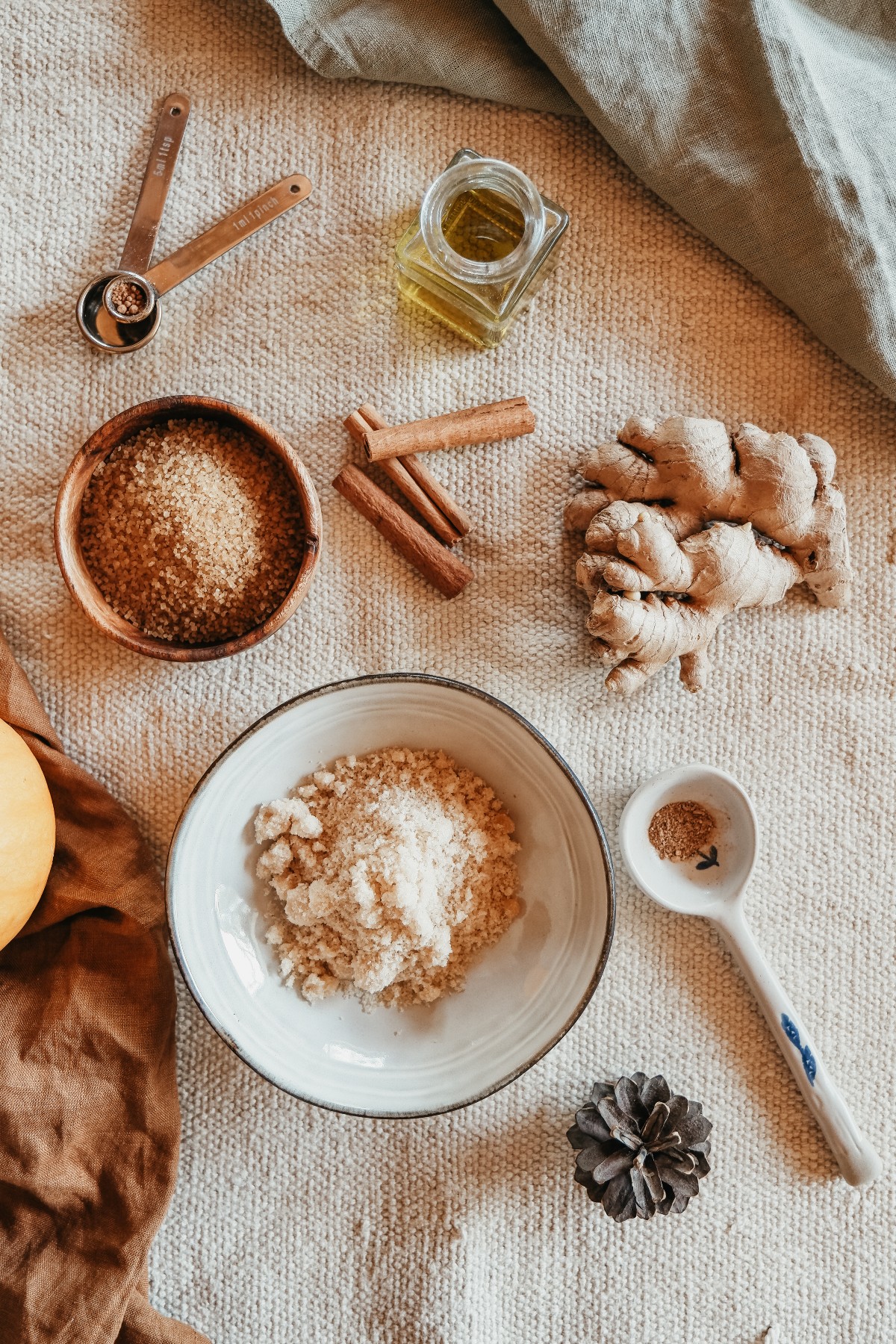
Pumpkin Body Scrub Recipe
½ cup turbinado sugar Shelf life: 6-12 months in a sealed container
This recipe turned out so good I could just eat it! Made with all-natural, food-safe ingredients, only one of which I didn’t already have in my pantry, this pumpkin spice body scrub leaves my skin glistening and moisturized for those end-of-summer romps while providing the autumnal pumpkin fix I’m craving. Who says you can’t have it all? Enjoy this body scrub in the late summer or autumn, or any time you are pining for the cozy aroma of pumpkin spice.
REFERENCES
Adib-Hajbaghery, M., & Hosseini, F. S. (2015). Investigating the effects of inhaling ginger essence on post-nephrectomy nausea and vomiting. Complementary Therapies in Medicine, 23(6), 827–831. https://doi.org/10.1016/j.ctim.2015.10.002
Angelo, G. (2012). Essential fatty acids and skin Health. Oregon State University: Linus Pauling Institute. https://lpi.oregonstate.edu/mic/health-disease/skin-health/essential-fatty-acids#topical-delivery
Cassano, R. (2012). Vitamin E chemistry, biological activity and benefits on the skin. In: Preedy, V.R. (Eds.). Handbook of diet, nutrition and the skin. (pp. 144–163). Wageningen Academic Publishers. https://doi.org/10.3920/978-90-8686-729-5_9
Chevallier, A. (2000). Encyclopedia of herbal medicine: The definitive reference to 550 herbs and remedies for common ailments. Dorling Kindersley.
Lautenschläger, H. (2014). All made of sugar – Glycosides in skincare products. Kosmetik International, 9, 24-26. https://dermaviduals.de/english/publications/special-actives/all-made-of-sugar-glycosides-in-skin-care-products.html
Raudenbush, B., Grayhem, R., Sears, T., & Wilson, I. (June, 2009). Effects of peppermint and cinnamon odor administration on simulated driving alertness, mood and workload. North American Journal of Psychology, 11(2), 245. https://link.gale.com/apps/doc/A200919505/HRCA?u=anon~ab2c9c33&sid=googleScholar&xid=52588d52
Zhang, L., & Lokeshwar, B.L. (2012). Medicinal properties of the Jamaican pepper plant Pimenta dioica and allspice. Current Drug Targets, 13(14), 1900-1906. https://doi.org/10.2174/138945012804545641
Pumpkin Sugar and Spice Body Scrub
Made with all-natural, food-safe ingredients, this pumpkin spice body scrub will leave your skin glistening and moisturized.
½ cup brown sugar
1 teaspoon ground cinnamon (Cinnamomum spp.)
½ teaspoon ground ginger (Zingiber officinale)
½ teaspoon ground nutmeg (Myristica fragrans)
¼ teaspoon ground clove (Syzygium aromaticum)
¼ teaspoon ground allspice (Pimenta dioica)
1-2 tablespoons pumpkin seed oil
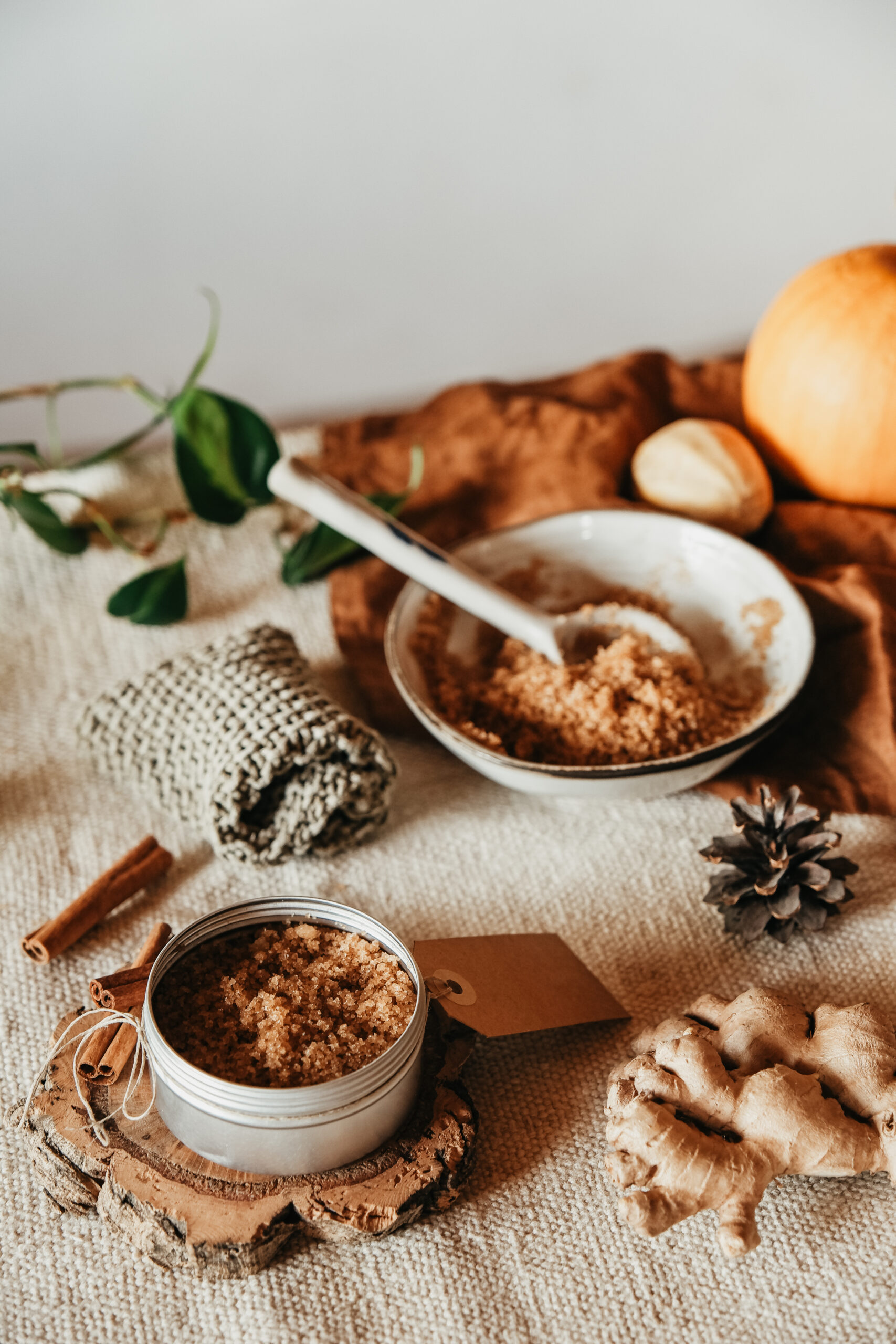
In Closing,
